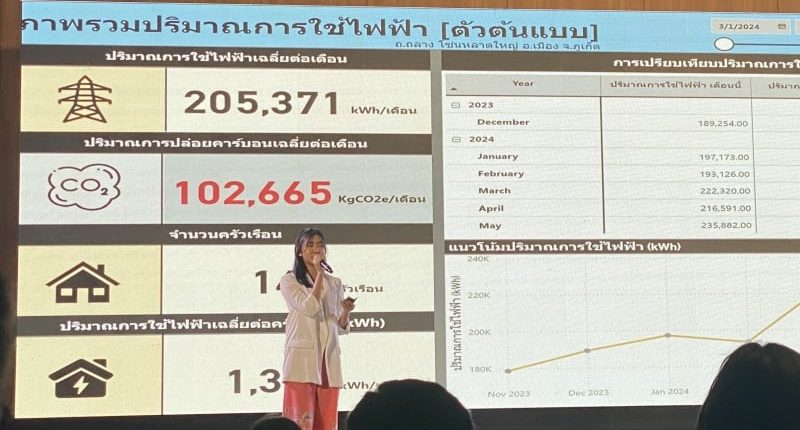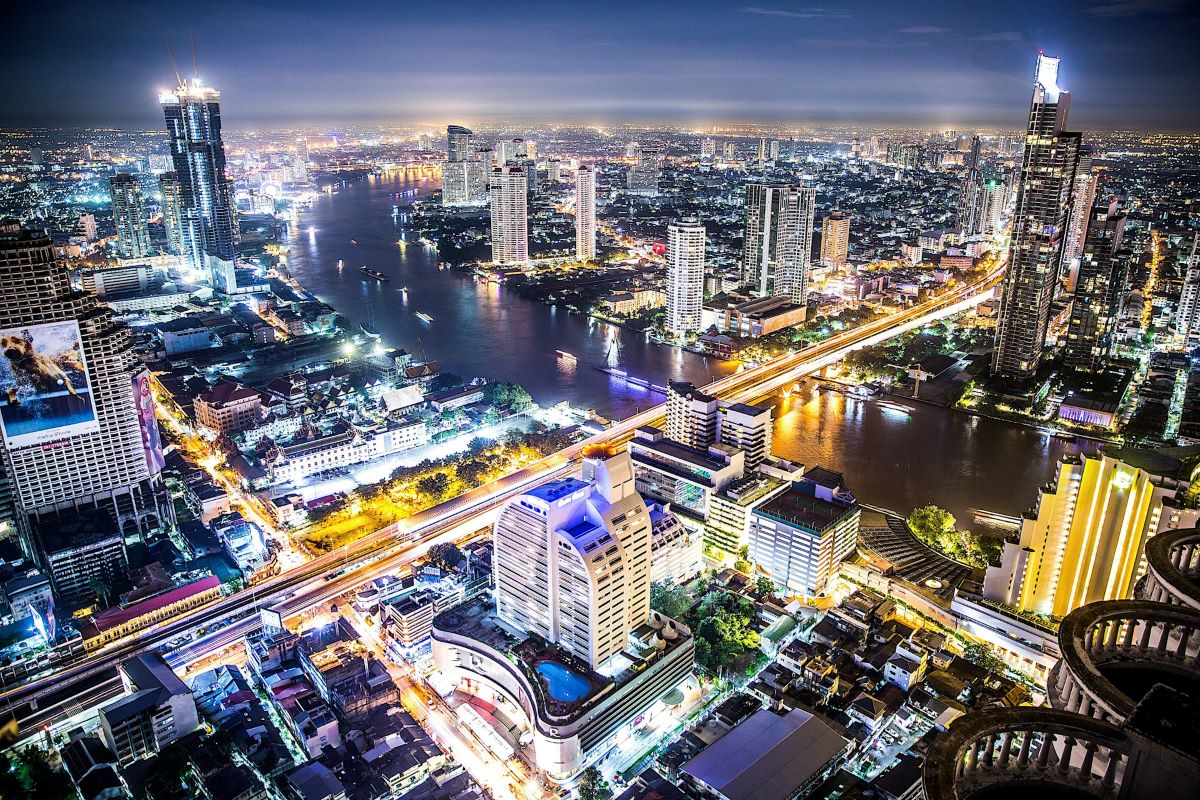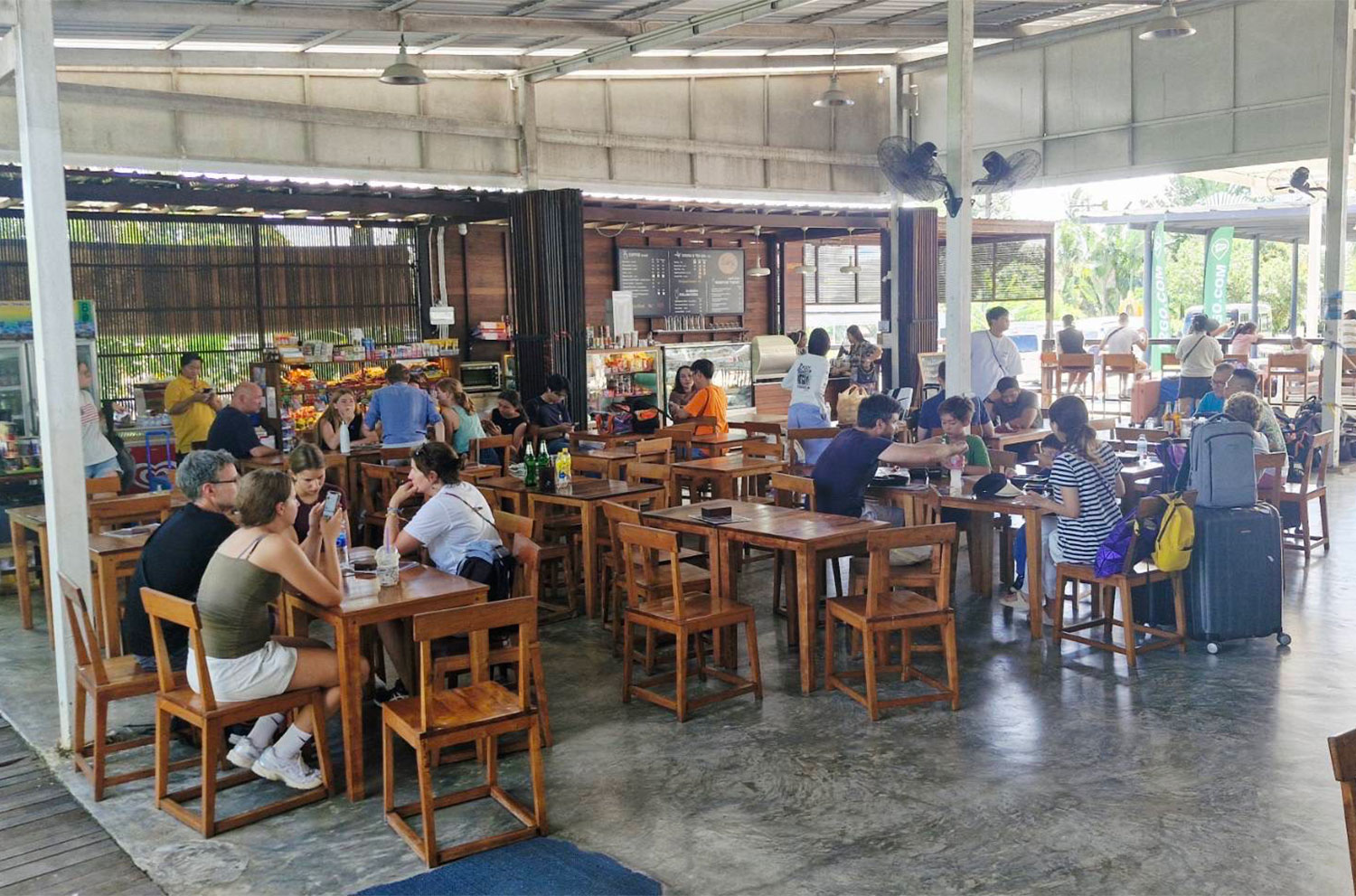A project to make Phuket Old Town carbon neutral and a zero-emission destination by 2065 is gaining momentum.
Bhummikitti Luktaengam, chairperson of the Sustainable Tourism Development Foundation, led a team presentation of the “Phuket Old Town Carbon Neutral Project” at the 25th International Island Tourism Forum (ITOP), held Wednesday and Thursday (September 25-26) at the Pullman Karon Beach Phuket Resort.
The forum brought together more than 150 leaders and policymakers from islands around the world.
Kanrutai, Bhummikitti’s daughter and project coordinator, took to the stage to present data obtained during the first phase of the project. With real metrics, policies can be created to achieve specific results. Ms Kanrusey explained that the data was collected as part of a collaborative project between Phuket City, the Big Data Research Institute, the Region 15 Pollution Control Office and Prince of Songkla University Phuket Campus.
Data collection began after discussions with project partners in December last year. The purpose of the meeting was to explore how data technology could be used to assess the carbon footprint of the Old Town’s various activities.
Announced earlier this year, Ms Kanrusey outlined the goals of reducing carbon emissions by 30% by 2030, achieving carbon neutrality by 2050 and achieving net zero emissions by 2065.
The starting point was an assessment of Phuket Old Town’s current greenhouse gas emissions. According to Ms Kanrusey, the greenhouse gas emissions from January to June 2024 are as follows:
1. Transportation, emissions 34,531 (KgCO2e)
2. Waste emissions amount to 12,529 (KgCO2e)
3. Wastewater emissions 36,513 (KgCO2e)
4. Electricity consumption emitted 442,259 (KgCO2e)
“As a result, a total of 525,832 (KgCO2e) was emitted in Phuket Old Town,” said Kanrutai.
Carbon dioxide equivalent (CO2e) is a unit of measurement for the warming effect of greenhouse gases. Kg/CO2e is the exchange rate of carbon with other greenhouse gases.
The exchange rate expresses how many kilograms of carbon dioxide emitted over a period of time (usually 100 years) warm the climate as much as one kilogram of another greenhouse gas.
CO2e converts the effectiveness (how much infrared radiation each tonne of gas absorbs) and lifetime (how long each tonne of gas radiates heat back into the atmosphere) of one tonne of carbon dioxide emitted. CO2e allows observers to compare the impacts of different greenhouse gases and consider them as a single climate footprint, the Carbon Cloud website explains.
Ms. Kanrutai explained that Phuket Old Town now uses a system using AI and CCTV to estimate the number of cars and tourists moving through the area. “This data provides important information to assess the carbon footprint of the Old Town,” she said.
So far, the system has estimated that 334,592 people visit the Old Town every month, with approximately 13,428 people visiting the Old Town per day.
“Phuket Old Town generates 17 tons of solid waste every month, all of which is sent to the incinerator. After burning, this equates to greenhouse gas emissions of 29,575 kg CO2e,” she added.
Separation in bags
“The second solution that this project is addressing is waste management through the strategic use of three types of plastic bags in local stores,” Kanrusey also explained.
The bags can be distinguished by color:
Blue bags for trash for incineration
Green bags for organic waste
⢠Yellow bags for recyclable materials
“These bags are intended to encourage residents to separate waste and dispose of it in the appropriate containers,” Kanrusey said. “Organic waste is converted into liquid fertilizer and processed using machines that produce gas to generate electricity.
“The separation of waste into different categories is now supported by young ambassadors who provide guidance and promote environmental awareness throughout Phuket Old Town,” she added.
The final part of the project is to promote the use of electric buses (EV buses) in Phuket city.
“These buses are an environmentally friendly alternative to diesel vehicles, helping to reduce emissions and improve air quality,” said Kanrusay.
Kanrusay noted that reducing carbon emissions brings economic and financial benefits. “By implementing this initiative, we aim to reduce carbon dioxide emissions by 30 percent by 2030. In addition, we are expected to earn 24 million baht from emission allowances equivalent to 890 baht per kilogram of CO2e,” she said.









